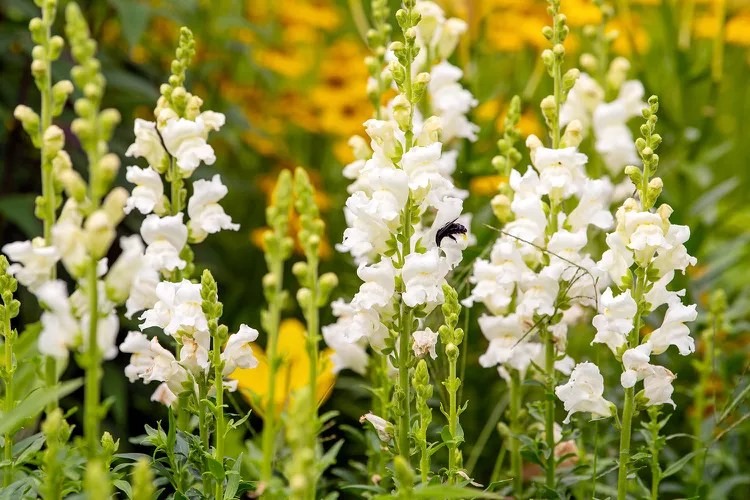Are snapdragons perennial or annual? This question may cross your mind as the growing season winds down and you're not sure if your snapdragon flowers will come back after the winter. And if not, will snapdragons self-seed or will you need to get new seeds? Here's what you need to know so you can continue to enjoy snapdragon flowers in your garden year after year.
What Is a Snapdragon?
The snapdragon most commonly grown in gardens is Antirrhinum majus, and hundreds of varieties are available in almost every color and size. These snapdragons are technically tender perennials, meaning they don’t tolerate much cold. That's why they are most often grown as annuals. They will bloom the first year after planting, whether from transplants or seeds.
So will snapdragons come back after winter? Most snapdragons are hardy in USDA Zones 7-11, or more likely 8-11. While they may grow back in spring in warmer regions, they don’t seem to bloom with the same vigor as they did in their first year. In colder regions, snapdragons won’t survive the winter but may self-seed. However, that should be viewed more as a bonus than a guarantee. I grow several hundred snapdragons yearly, and I rarely get "volunteers."
Hybrid snapdragons that self seed will have different colors and shapes than the parent plants. Open-pollinated snapdragons will have the same color patterns and size. Look for packets or plants labeled ‘OP’ if you want open-pollinated snapdragons. Heirloom varieties are also open-pollinated.
Perennial Snapdragons
If you are looking for perennial snapdragons, here are a few to try. These might be hard to find at a garden center, so ordering seeds or small plants online may be your best bet. Use the botanical name to be sure you are getting the right plant.
Antirrhinum braun-blanquetii
Sometimes called perennial or hardy snapdragon, Antirrhinum braun-blanquetii forms a clump about two feet wide and two feet tall. Its flower spikes are covered with snaps the color of buttered popcorn from summer into fall. This snapdragon is hardy to Zone 5 and warmer.
Spanish Snapdragon
Antirrhinum hispanicum is commonly known as the Spanish snapdragon. Usually found in blooms of pink and yellow, it is shorter in height at about a foot tall. It does well in heat and drier conditions. Spanish snapdragons are hardy in Zones 5-8 and are an excellent choice for rock gardens.
Silver Snapdragon
Silver snapdragon (Antirrhinum sempervirens) is another native of the Mediterranean region. As you might guess by the name, the foliage is silvery-green. In bloom, this perennial is covered in white or pale pink flowers. Silver snapdragons are hardy in Zones 5-8 and reach about 12-16 inches tall. Silver snapdragon is tolerant of drier sites once established.
How to Grow Snapdragons from Seeds
Snapdragons grow slowly from seed, so you’ll need to start early. The seeds are tiny and better started indoors than directly sown in the garden.
- Sow seeds in trays or cells about 10-12 weeks before your last frost date. Fill trays with pre-moistened seed starting mix.
- Drop the seeds on top of the starting mix and press gently with your finger to ensure good seed-to-soil contact.
- Snapdragon seeds need light to germinate, so only cover them with a fine layer of vermiculite or seed starting mix.
- Water from the bottom to avoid washing out seeds.
- Be patient–snapdragon seeds can take two weeks to germinate.
- Once they have a pair of true leaves, pot them up to cells (if you planted them in an open tray).
- Provide enough light. A sunny window in the winter usually won’t do it–you’ll get leggy, pale, spindly seedlings. Supplemental grow lighting is needed for good results.
- Fertilize with a diluted general-purpose fertilizer when watering, about every week or two.
- Harden off your seedlings before transplanting them into the garden. They can be planted outdoors about two weeks before your area's last frost date so start the hardening off process a week to ten days before that.




















